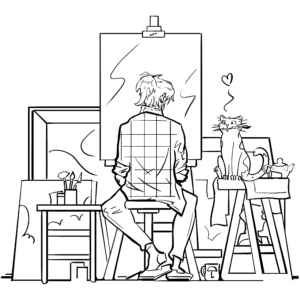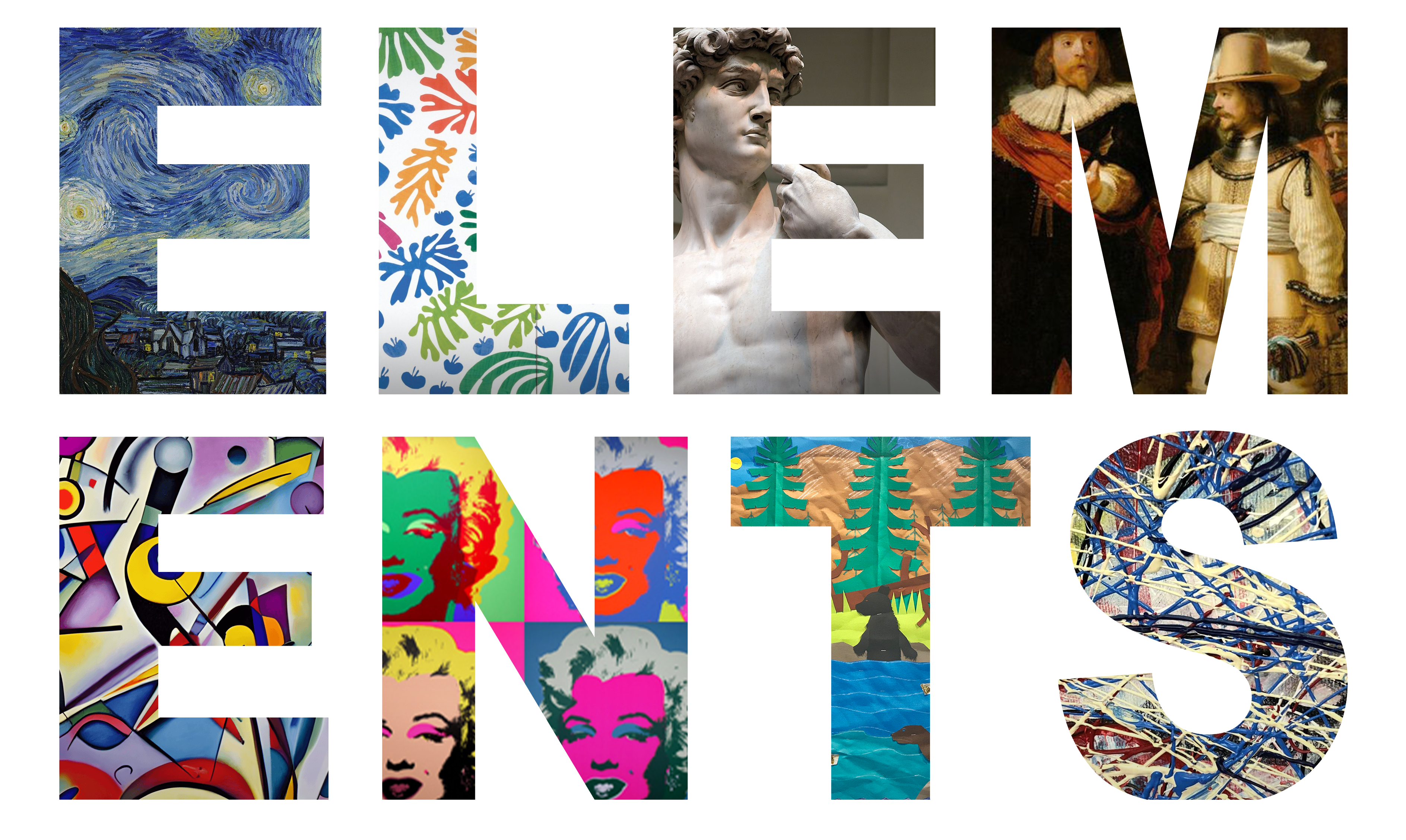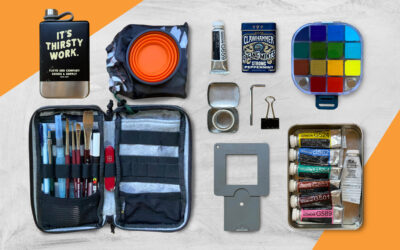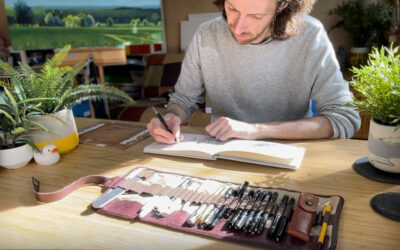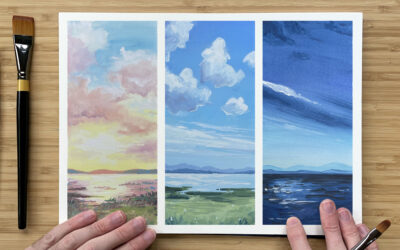So what are these Seven Elements of Art I keep hearing about?. It’s a common query among artists, both seasoned and newbies alike. But fear not, because today we’re doing a fly by overview of this intriguing subject to define these mysteries and explore just how beneficial they can be in our creative practice. So, strap in, grab your nearest sketchbook and let’s see what’s up.
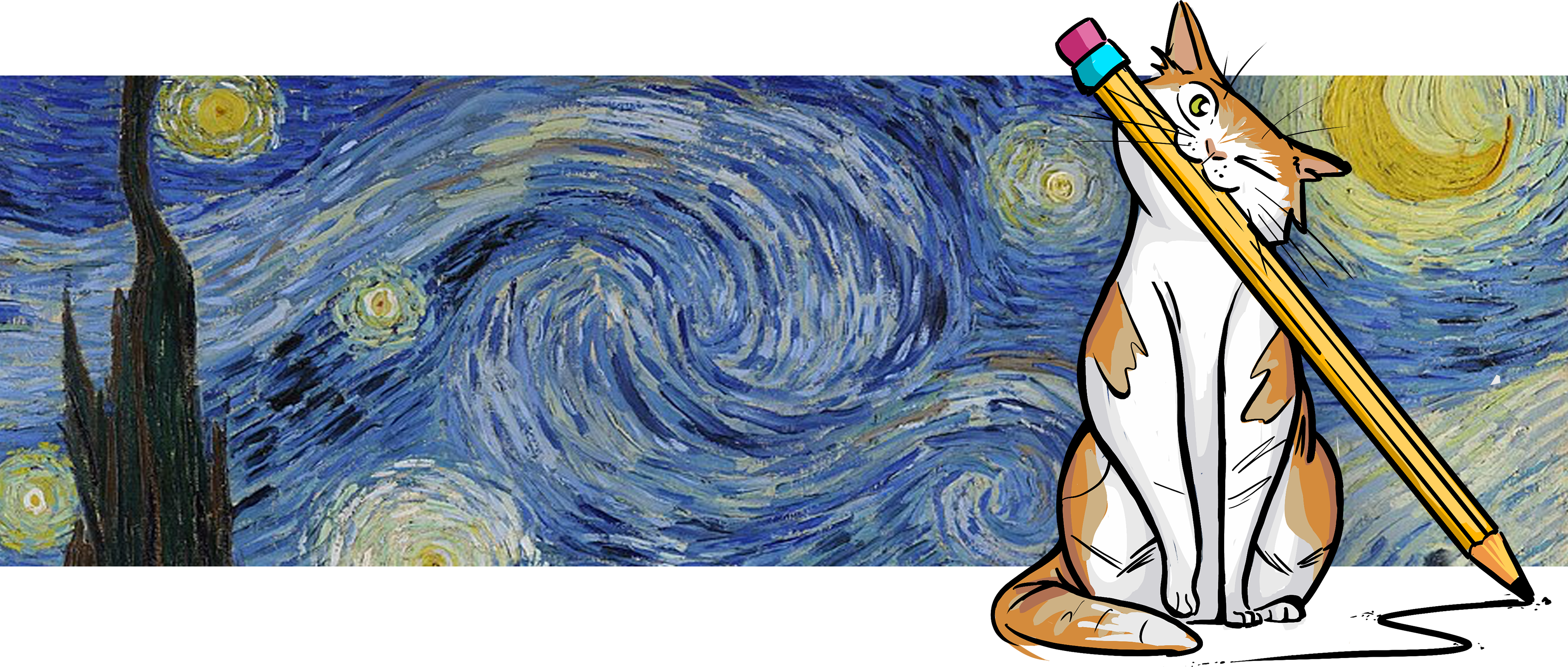 Line
Line
Like a shooting star, imagine a single point dancing through space and leaving behind a trail – it’s like a visual journey. Lines can be bold or delicate, straight or curvy. They guide the viewer’s eye and can convey emotions or narratives within your artwork. Think of Van Gogh’s expressive, swirling lines in “Starry Night”. All those little brush marks created by ‘Real’ lines to physically create marks. Then there are ‘Implied’ lines that suggest a feeling of movement, perspective or focal point in a scene. In our art, Lines are created where any mark starts moving.
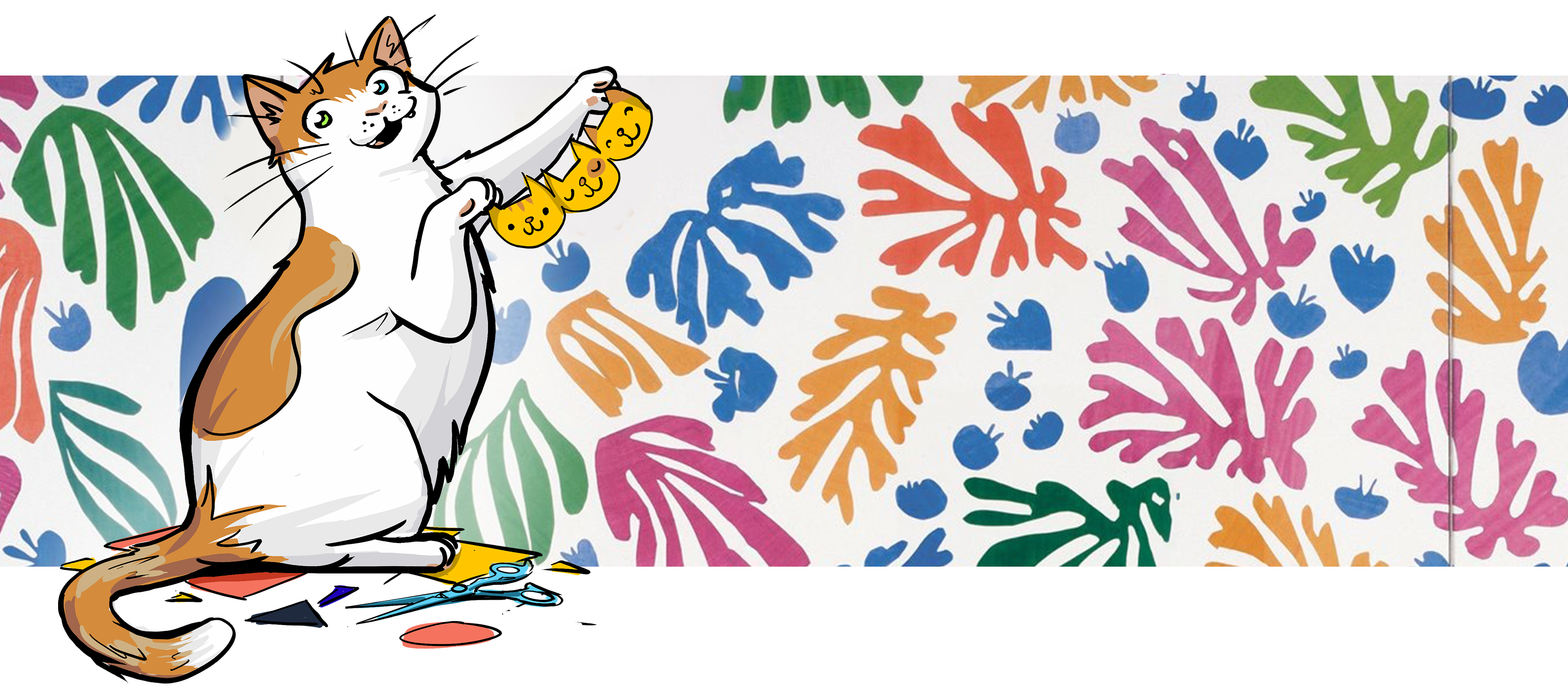 Shape
Shape
Think of your canvas as a playground for shapes – circles, squares, triangles, and everything in between. Shapes are lines that close and complete themselves as if they are connecting their head to that tail. They define spaces and create structure as we can use these to build our artworks up or simplify everything down. Experimenting with ‘positive and negative space’ can give your compositions depth and intrigue too. Just like in Matisse’s cut-out masterpieces, even if they are 2D it doesn’t mean the final result looks flat.
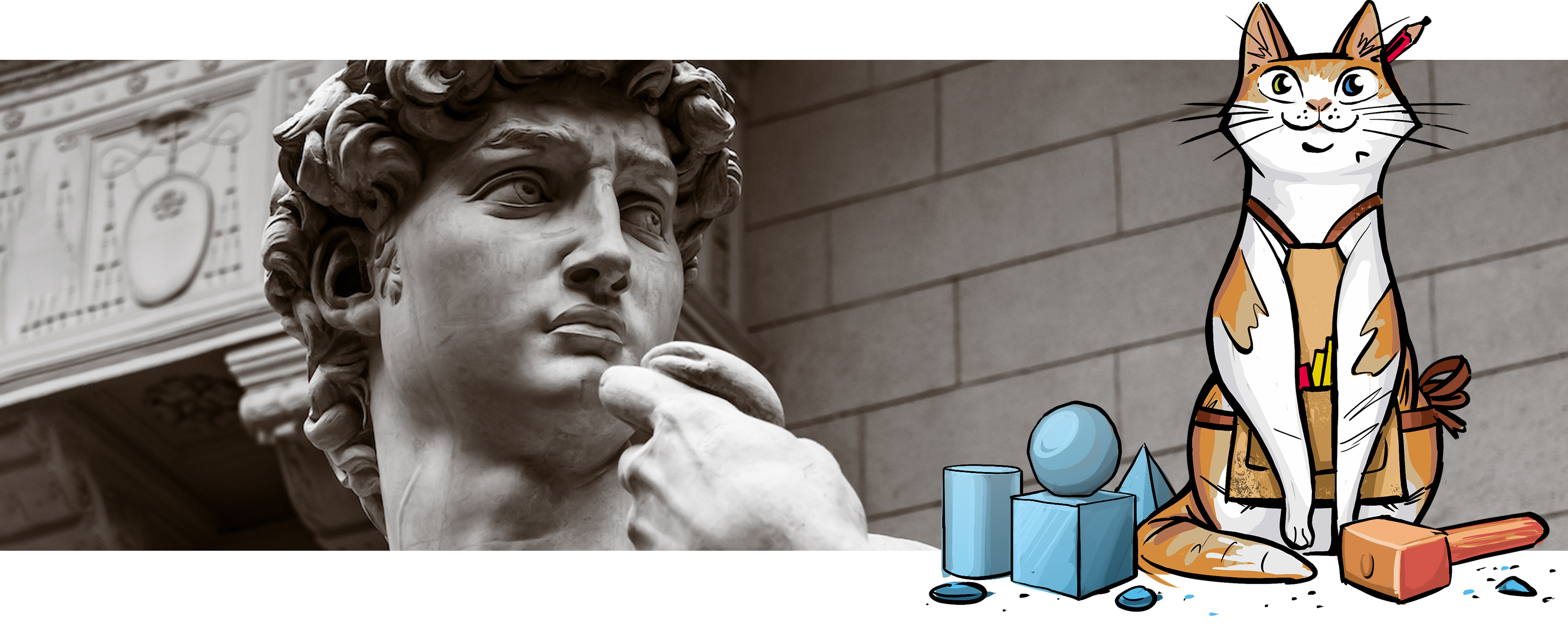 Form
Form
Now, let’s add another dimension – literally. Forms are like shapes with depth, transforming 2D surfaces into sculptures or 3D renderings and typically comes in two flavours, ‘Real’ or ‘Implied’. The best way to think of it is how sculptors carve figures out of marble. You view a statue from all angles as it occupies a real physical space, a la Michelangelo’s “David.”. While painters use various techniques to imply or suggest volume to create a believable illusion of depth in a drawing or on a canvas.
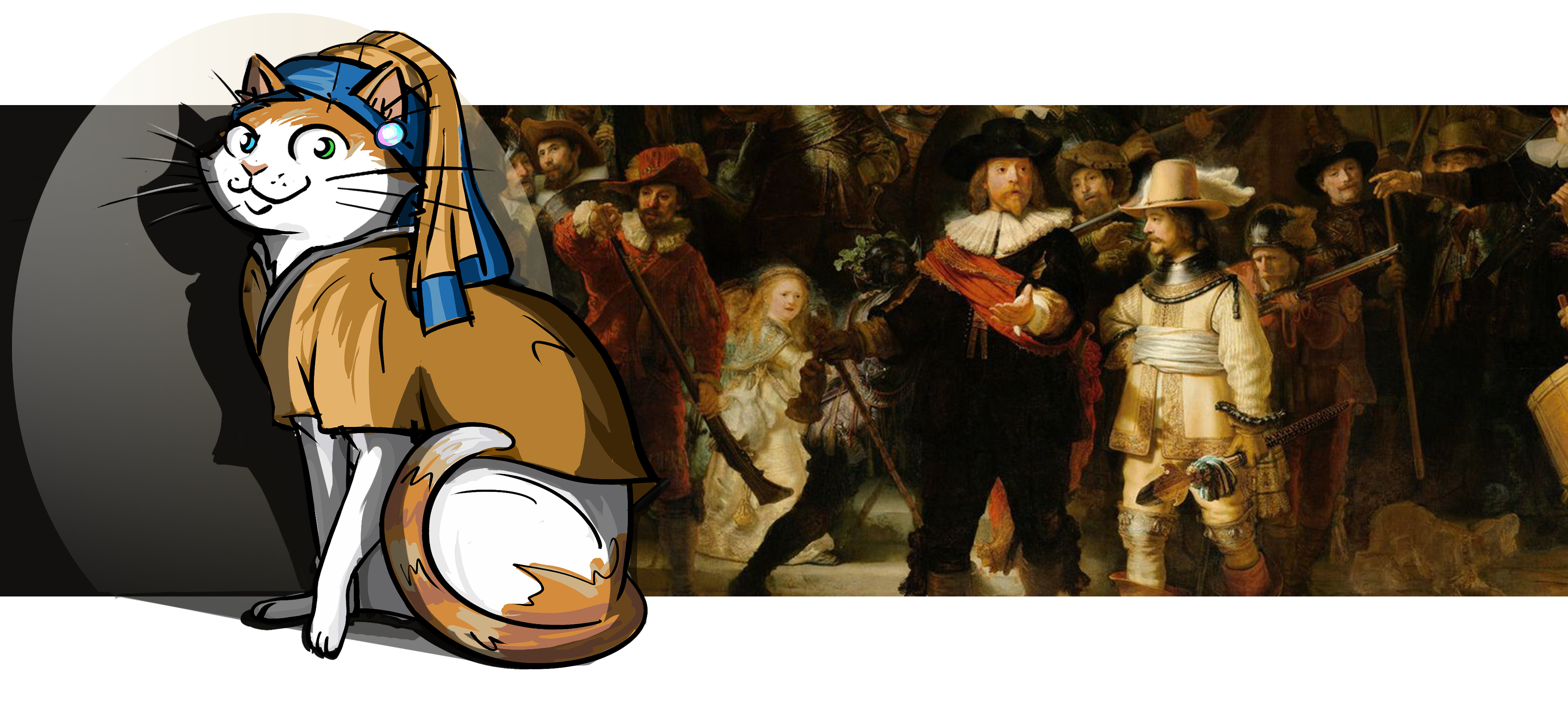 Value
Value
After talking about Form, we usually bump into Value at the same time. ‘Value’, or ‘Tonal Range’ is what brings depth and dimension to your work, playing with the contrast between light and shadow. Fancy terms like Chiaroscuro that evoke drama or use subtle gradations to create mood, akin to the stunning works of Rembrandt, it can just as easily be used to set those pale mountains in your landscape back into the distance. A rage of highlights, mid-tones and shades is what will take your artwork from looking like a flat facade to a believable scene with depth.
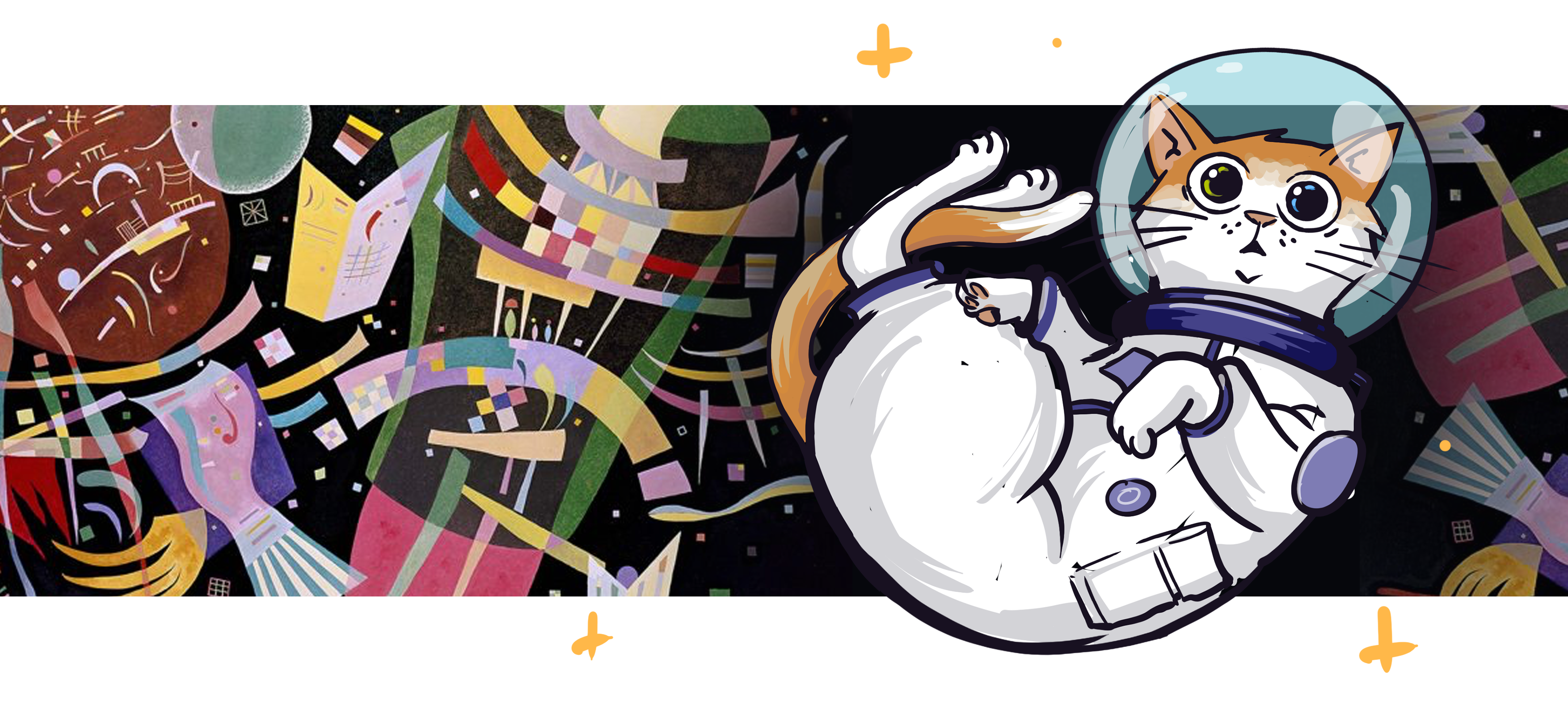 Space
Space
Here’s where we play with perception. Space isn’t just emptiness; it’s the playground where your elements interact. Use perspective to create depth, set a focal point or invite viewers to step into your world. Escher warps reality with mind-bending spatial illusions, where up becomes down and foreground merges with background swapping seamlessly. Whereas Kandinsky creates a visual experience as the abstract shapes and colours dance and play with each other on the space of the canvas.
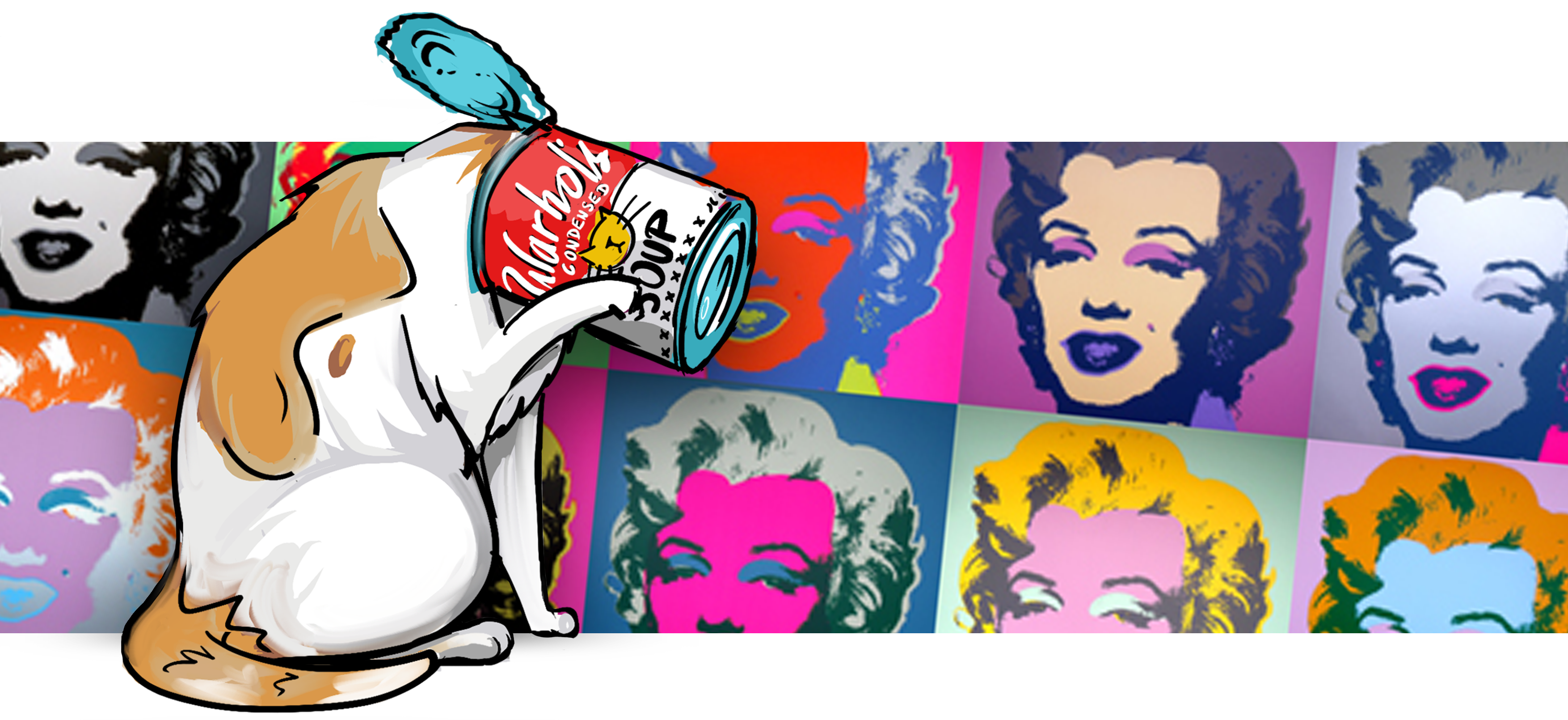
Colour
I may be biased but colour is probably the most fun of all the the seven elements. Although colours aren’t just pretty—they’re powerful storytellers too. By exploring hues, their values, and intensities to evoke emotions or set the mood. From Monet’s dreamy water lilies to the vibrant chaos of a Jackson Pollock, colour speaks volumes whatever shade you choose!
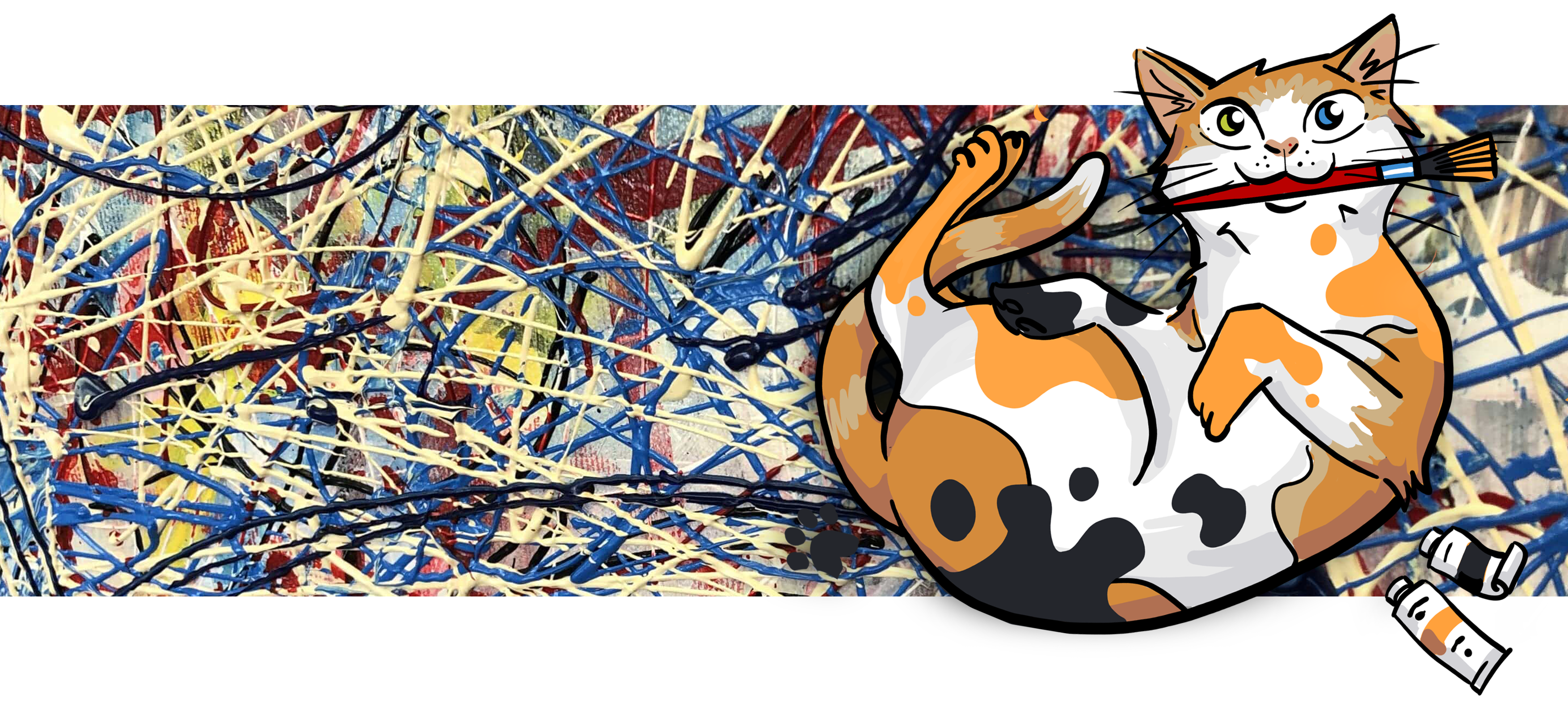 Texture
Texture
Close your eyes and imagine the rough bark of a tree or the smooth surface of a marble statue. Another element that comes it two flavours, Texture can be ‘Tactile’ or “Visual’. Think again of how Van Gogh’s thick, impasto strokes add physical energy to his paintings you could touch and feel the ridges. Or alternatively those Bill Braun paintings that were circling Instagram recently, visually it might look like fuzzy felt collage but to touch they are flat acrylic paintings! Texture adds richness and tangibility to your work, inviting viewers to explore with more than just their eyes.
To sum it up, mastering these seven elements is like unlocking the secrets of an artist’s toolkit. By experimenting with each element, layer by layer, you’ll deepen your understanding of art and discover endless possibilities for creative expression. Art is a huge subject too! It can be overwhelming to tackle all of these concepts at once so by breaking it all down down into these manageable chunks allows our skills will grow, and our artwork to flourish. Happy creating!
